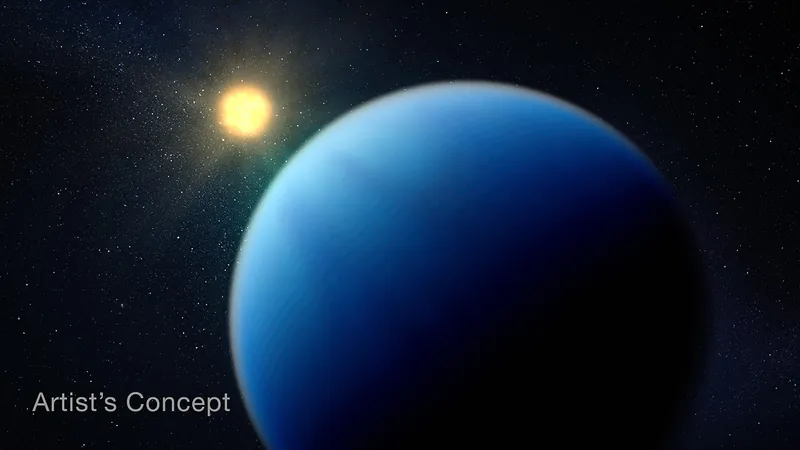
Spectacular Discovery: Water Found in Atmosphere of Distant 'Sub-Neptune' Exoplanet!
2025-05-07
Author: Michael
NASA’s James Webb Space Telescope Makes Groundbreaking Discovery
In an extraordinary revelation, NASA's James Webb Space Telescope (JWST) has detected water in the atmosphere of an exotic exoplanet, TOI-421 b, which is a scorching hot 'sub-Neptune' located approximately 244 light-years from Earth.
What Makes TOI-421 b So Unique?
TOI-421 b is categorized as a 'sub-Neptune' — a type of planet that has no equivalent in our solar system. Researchers are eager to understand these celestial bodies, as they are increasingly found through advanced technology such as the JWST.
Prior to this groundbreaking study, attempts to analyze the atmospheres of sub-Neptunes using traditional methods often yielded limited results, typically showing flat spectra that concealed crucial chemical signatures. The spectral data usually failed to reveal signs of atmospheric molecules like carbon dioxide, methane, or water vapor.
A Breakthrough in Spectroscopy!
The research team boldly believed that TOI-421 b might break this pattern of mystery. Principal investigator Eliza Kempton from the University of Maryland explained, "We thought maybe this planet wouldn't have hazes that typically obscure these signatures because it exists above a certain temperature threshold."
The team took advantage of JWST’s capabilities to investigate TOI-421 b, and their predictions paid off! They observed this planet's atmosphere during two transits, revealing a wealth of information.
Exciting Atmospheric Revelations!
Significantly, the JWST found water vapor in TOI-421 b's atmosphere, alongside potential signs of carbon monoxide and sulfur dioxide. Interestingly, there were no traces of methane or carbon dioxide, and an impressive amount of hydrogen was detected.
Challenging Established Theories!
These discoveries are challenging existing theories regarding the formation and evolution of sub-Neptunes. Kempton expressed her surprise, stating, "We had been kind of expecting heavier molecules, but instead, we found a distinct hydrogen-rich atmosphere." This hints that TOI-421 b's formation might have diverged significantly from cooler sub-Neptunes previously studied.
A Closer Look at Its Host Star's Influence
What adds to the intrigue is the atmospheric composition of TOI-421 b, which closely parallels that of its host star. Kempton noted, "Imagine taking the same gas as the host star and applying it to a planet's atmosphere at a much cooler temperature — it results in a similar gas mix. This finding is reminiscent of gas giants in our own solar system and is unlike other sub-Neptunes observed by Webb."
The Journey Ahead in Exoplanet Studies
Kempton couldn't contain her excitement: "I've waited my entire career for Webb to help us meaningfully analyze the atmospheres of these smaller planets. By studying their atmospheres, we can gain valuable insights into how sub-Neptunes form and evolve, and why they are absent from our solar system."









 Brasil (PT)
Brasil (PT)
 Canada (EN)
Canada (EN)
 Chile (ES)
Chile (ES)
 Česko (CS)
Česko (CS)
 대한민국 (KO)
대한민국 (KO)
 España (ES)
España (ES)
 France (FR)
France (FR)
 Hong Kong (EN)
Hong Kong (EN)
 Italia (IT)
Italia (IT)
 日本 (JA)
日本 (JA)
 Magyarország (HU)
Magyarország (HU)
 Norge (NO)
Norge (NO)
 Polska (PL)
Polska (PL)
 Schweiz (DE)
Schweiz (DE)
 Singapore (EN)
Singapore (EN)
 Sverige (SV)
Sverige (SV)
 Suomi (FI)
Suomi (FI)
 Türkiye (TR)
Türkiye (TR)
 الإمارات العربية المتحدة (AR)
الإمارات العربية المتحدة (AR)